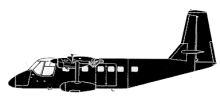Incident Overview

Description
The aircraft, a GAF Nomad N.22, had been chartered to fly a German group to a number of tourist destinations in New Zealand. On day 7 of the tour the group was to be flown from Mount Cook to Queenstown. The flight was to include scenic flying in the Mount Cook region. The flight took off from Mount Cook-Glentanner Airport at 11:55. While en route the crew made position reports by radio and was seen flying below the 3500 feet cloud base in the Franz Josef Valley. The aircraft’s position and its heading, more or less directly up the centre-line of the Franz Josef Glacier, drew the attention of a witness. It was then seen to fly at 400-500 feet over the glacier. The aircraft continued until it struck a severely crevassed and pinnacled upper ice-fall of Franz Josef Glacier at an elevation of 4500 feet (1370 m) amsl. The probable cause of this accident was the decision to attempt to climb above the lower region of Franz Josef Glacier which had an average slope steeper than the aircraft could outclimb. A causal factor was the crew’s lack of training and experience in mountain flying rendering them vulnerable to visual misperception. Probable contributing factors included a cloud layer limiting the position and altitude at which climb could be commenced and an optimistic assessment ofthe aircraft’s capability and progress during the climb.
Primary Cause
Crew’s lack of training and experience in mountain flying, leading to visual misperception and vulnerability to the terrain.Crew’s lack of training and experience in mountain flying, leading to visual misperception and vulnerability to the terrain.Share on:




